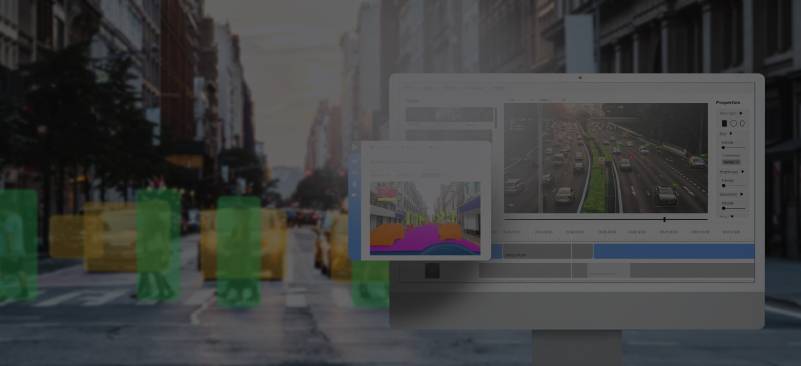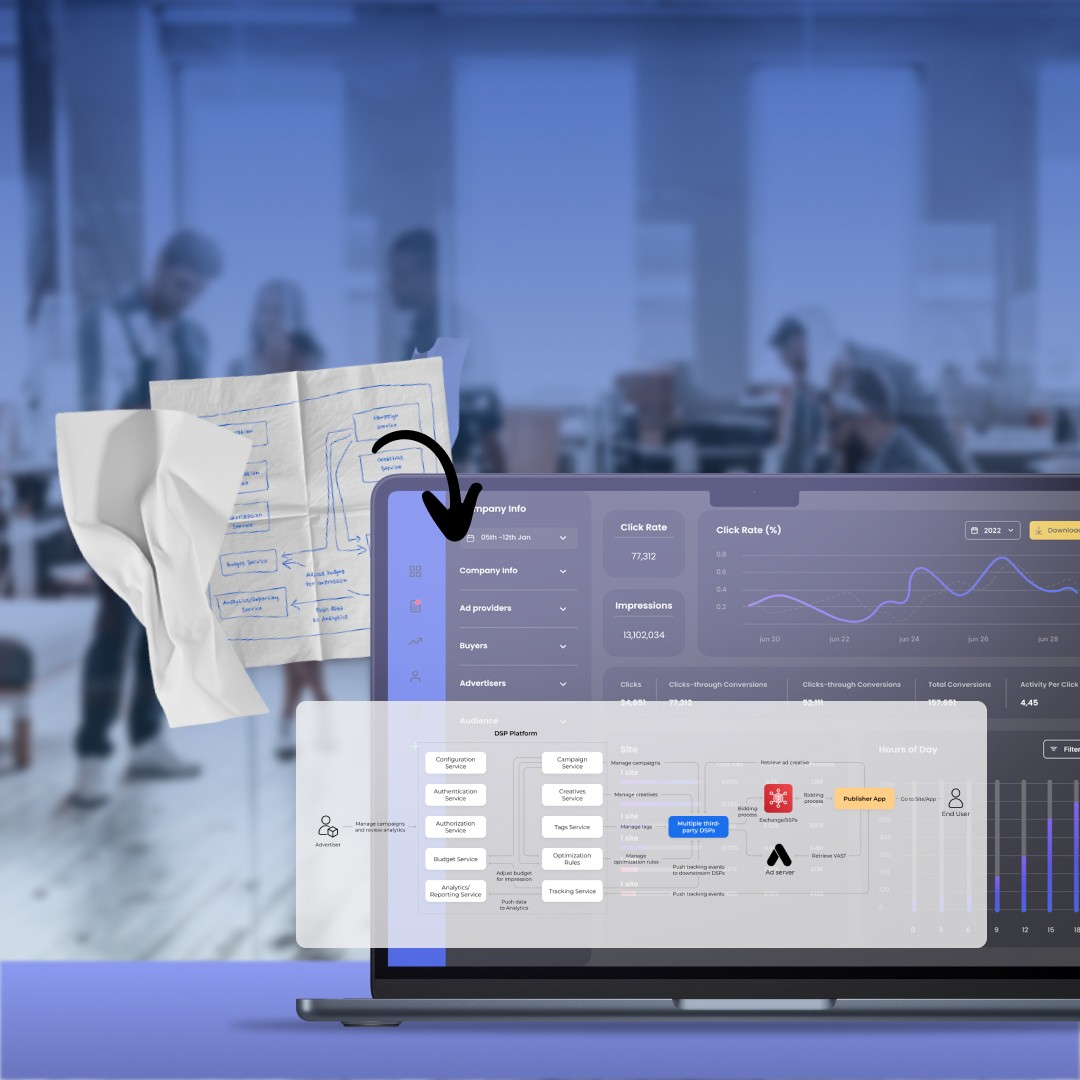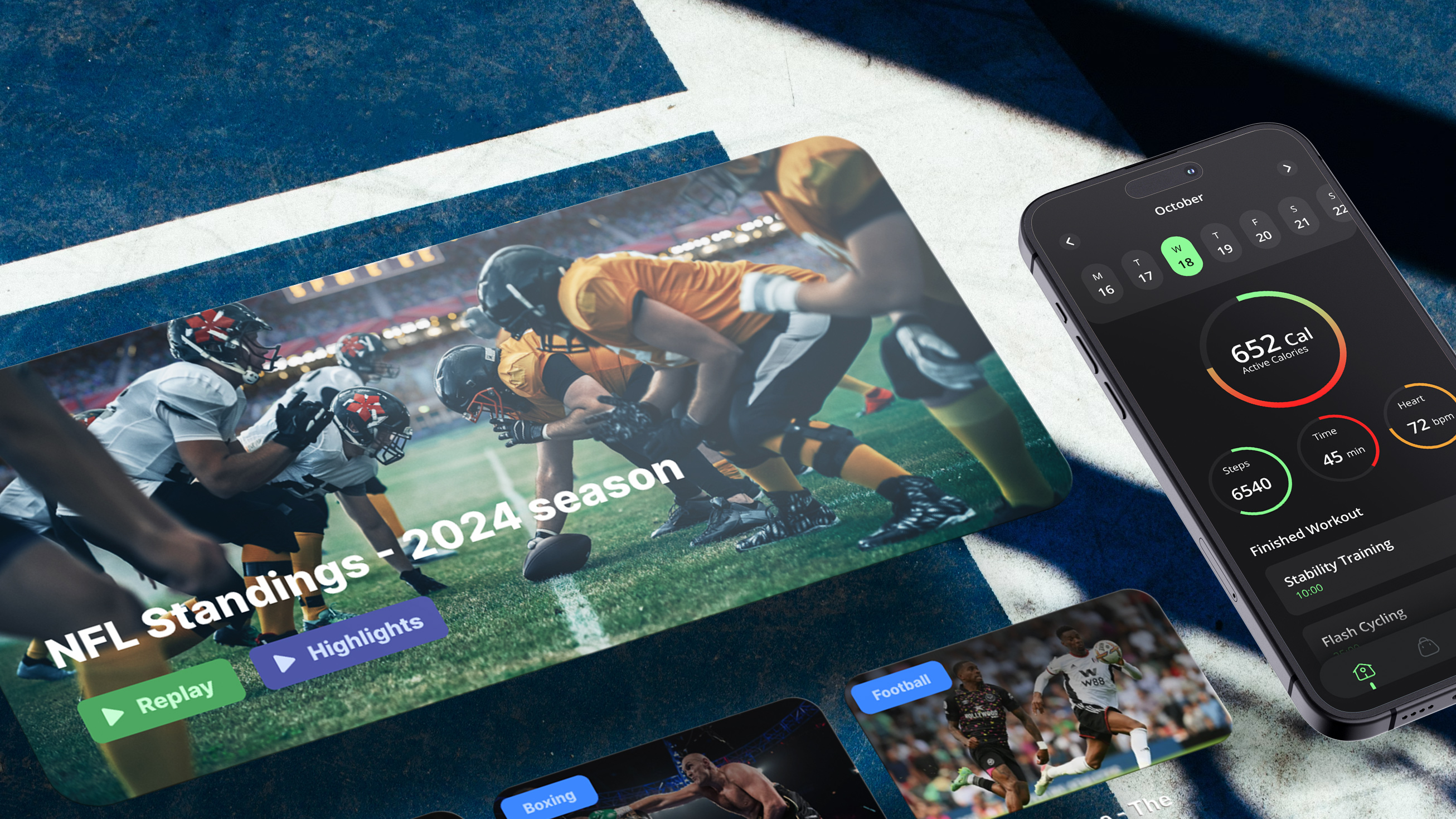The big picture of the AdTech market
The age-old wisdom goes that choosing the right trend to follow is the key difference between a business thriving and becoming invisible to customers.
And while you’ve heard this a million times, there’s a high chance you haven’t yet paid enough attention to some of the most promising trends shaping 2025. If that’s the case, now might be the perfect time to start. Especially since ad placements — and with them, the opportunities for advertising and monetization — are expanding rapidly.
The AdTech market continues to evolve, powered by advances in AR/VR, AI-driven personalization, and the increasing availability of data for precise targeting. According to a report by Fortune Business Insights, the global AdTech market was valued at USD 876.21 billion in 2024 and is projected to grow from USD 986.87 billion in 2025 to USD 2,547.17 billion by 2032, exhibiting a CAGR of 14.5% during the forecast period. North America held the largest market share in 2024, accounting for 34.65%1.
The market’s rapid growth is closely tied to the global shift from traditional to digital advertising. As smartphone usage and internet penetration continue to rise, businesses are focusing more than ever on digital channels to reach broader and more targeted audiences. Industry experts forecast that digital ad spending will hit USD 1.08 billion in 2025, with search advertising remaining the dominant format1.
With such strong momentum, keeping up with AdTech industry trends in 2025 isn’t just a smart move — it’s essential for staying competitive.
7 Key AdTech trends shaking up the industry
To help you reap all the benefits the AdTech market’s increasing value has to offer instead of merely observing it from the sidelines, Oxagile has rounded up a list of the most noteworthy AdTech trends based on the insights from the recent projects and the major industry conferences of the year. And while you’ll probably spot some familiar innovations in this list, like alternatives to third-party cookies, there are also exciting new trends that are bound to give you fresh ideas on reaching target audiences and enhancing your KPIs.

AI is no longer just a hot topic — it’s a working engine behind smarter, faster, and more personalized advertising. In 2025, the real story isn’t about the noise around AI, but about the real breakthroughs happening behind the scenes.
Addressing the void after third-party data vanishing
AI is increasingly becoming the go-to choice for analyzing user interactions with ads, like dwell time, scroll depth, or facial expressions, to assess user engagement and their feelings about the content. This trend shows no signs of slowing down, and AI remains actively employed in understanding people’s reactions to ads.
With the deprecation of third-party cookies now fully implemented across major platforms, these alternative data points have become essential. In 2025, advanced AI techniques like agent-based modeling and deep learning are helping marketers and publishers adapt with confidence. These tools enable demand forecasting, dynamic scenario planning, cross-channel budget optimization, and highly accurate behavioral predictions — all of which are critical in a post-cookie landscape.
Enhancing much-desired trust and transparency
The global spotlight on privacy has only intensified, driven by evolving regulations like GDPR, DAA, and regional laws in markets such as California, Brazil, and India. As a result, companies that actively promote and implement Responsible AI — aligning with ethical and legal frameworks — are earning stronger trust from both users and stakeholders.
AI-powered contextual targeting is also playing a growing role in 2025. By understanding the full context of content, not just keywords, it ensures ads appear in suitable, brand-safe environments. Meanwhile, sophisticated fraud detection systems powered by AI are now standard: they monitor traffic in real time, flag anomalies, and stop threats like SSAI attacks, SDK spoofing, bot farms, and click spamming before they cause damage.
2. The evolving landscape of CTV measurement
CTV ad spending continues to rise steadily, fueled by the expansion of ad-supported models from platforms like Netflix, Disney+, and Amazon Prime Video. With more premium inventory entering the market, advertisers are seizing the opportunity to reach engaged audiences in a lean-back environment. In 2025, CTV is no longer just a complementary channel — it’s becoming central to omnichannel strategies.
Yet, accurate measurement remains one of CTV’s main challenges. The good news? Advances in identity resolution and cross-device attribution are closing the gap. By combining IP addresses, device graphs, first-party data, and real-time audience segmentation, marketers can now track CTV campaigns with increasing precision — approaching the measurability of other digital formats.
What’s more, machine learning continues to play a transformative role in CTV creative optimization. In 2025, AI engines analyze vast metadata sources and automatically suggest — or even generate — the most effective combinations of visuals, audio, and messaging. This enables dynamic personalization, boosts viewer engagement, and significantly extends the shelf life of ad creatives across diverse audience segments.
3. Sustaining ad revenue and customer insights in the cookieless era

What was once seen as a major disruption — the phase-out of third-party cookies — has now become the new normal in 2025. Rather than a loss, the cookieless era has become a catalyst for innovation, prompting advertisers and publishers to rethink data strategies and build more sustainable, privacy-conscious approaches.
Collecting first-party data
With third-party tracking now phased out across all major platforms, marketers are doubling down on first-party data as their most valuable asset. Customer data platforms (CDPs) and consent management platforms (CMPs) are now essential tools for capturing and organizing user information across touchpoints — enabling personalization, analytics, and targeted communication within the bounds of consent.
In parallel, data partnerships have matured. Secure environments like data clean rooms are playing a growing role in enabling privacy-preserving data collaboration between brands, publishers, and platforms — helping unlock value from willingly shared data without exposing sensitive details.
Contextual targeting makes a powerful comeback
As privacy regulations tighten and identifiers disappear, contextual advertising has re-emerged as a high-performing, future-proof solution. By analyzing the content’s topic, tone, and format — instead of user identity — advertisers can effectively reach relevant audiences in a non-invasive way.
In 2025, the effectiveness of contextual targeting has reached new heights thanks to AI. Technologies like natural language processing, computer vision, and real-time content analysis enable scalable, precise ad placements that match not only the subject matter but also the mood and semantics of the content. The result? A cost-efficient strategy that protects privacy while improving performance and media revenue.
4. Supply chain optimization
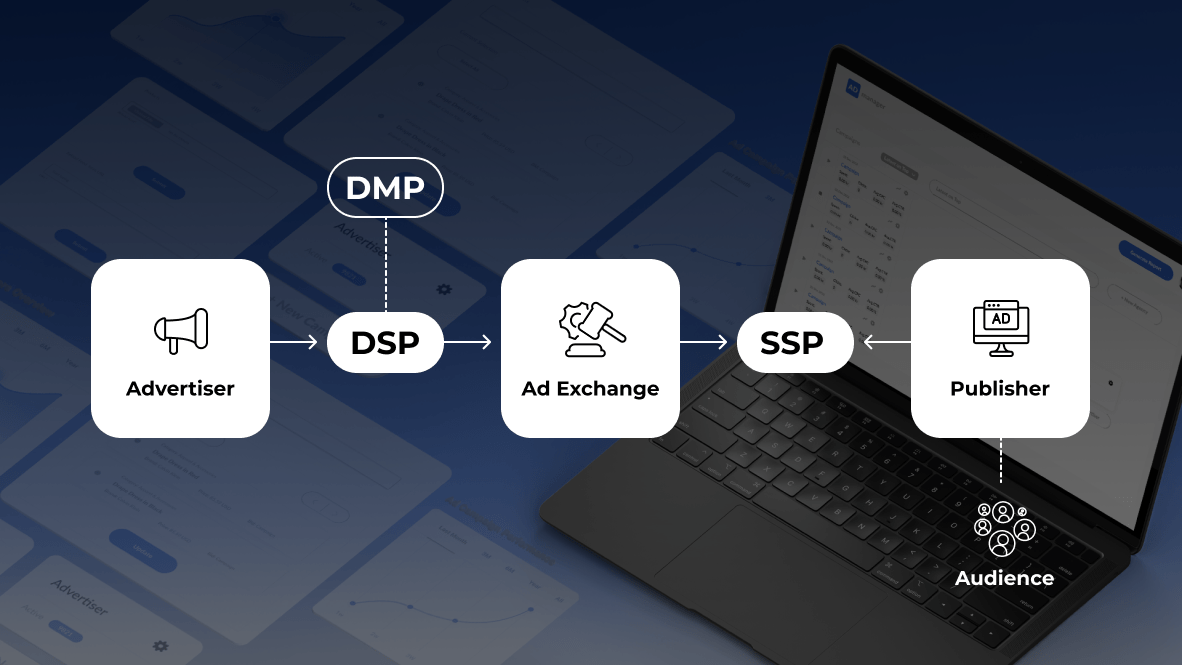
Today, the advertising delivery ecosystem to end consumers has many layers, but there’s a clear trend towards streamlining it, particularly with the convergence of demand-side platforms (DSPs) and supply-side platforms (SSPs). While traditionally serving advertisers and publishers separately, these platforms are becoming increasingly interconnected and taking on each other’s roles. DSPs are now directly integrating with publishers, and SSPs are partnering with agencies, adopting DSP strategies.
This shift is giving rise to a new market model that’s not only more efficient, but also offers greater transparency and ease of understanding. This trend is expected to strengthen in 2025.
5. Supply chain transparency
Unfortunately, the advertising ecosystem today, involving advertisers, publishers, agencies, ad networks, and data providers, can be a bit of a puzzle. It’s not always easy to figure out who’s doing what and how data is being used. However, the good news is that we’re seeing a clear trend towards supply chain optimization, which is all about increasing transparency and efficiency in the programmatic supply chain by cutting out intermediaries who don’t add much value. We’ve started to delve into this when talking about bringing DSPs and SSPs together, but this process goes even deeper.
One recent initiative pointing in this direction is the IAB Tech Lab’s Trusted Server, launched in 2025. This open-source server-side ad management framework allows publishers to bring key advertising functions in-house — reducing data leakage, protecting first-party data, and minimizing unnecessary third-party access. It’s a big step toward responsible, privacy-first programmatic advertising and a more transparent supply chain2.
Benefit from every change on the market
If you’ve been waiting for the right time to breathe new life into your advertising workflow with fresh solutions, there’s no time like now, and no AdTech partner better than Oxagile.
6. Programmatic adoption in retail media networks
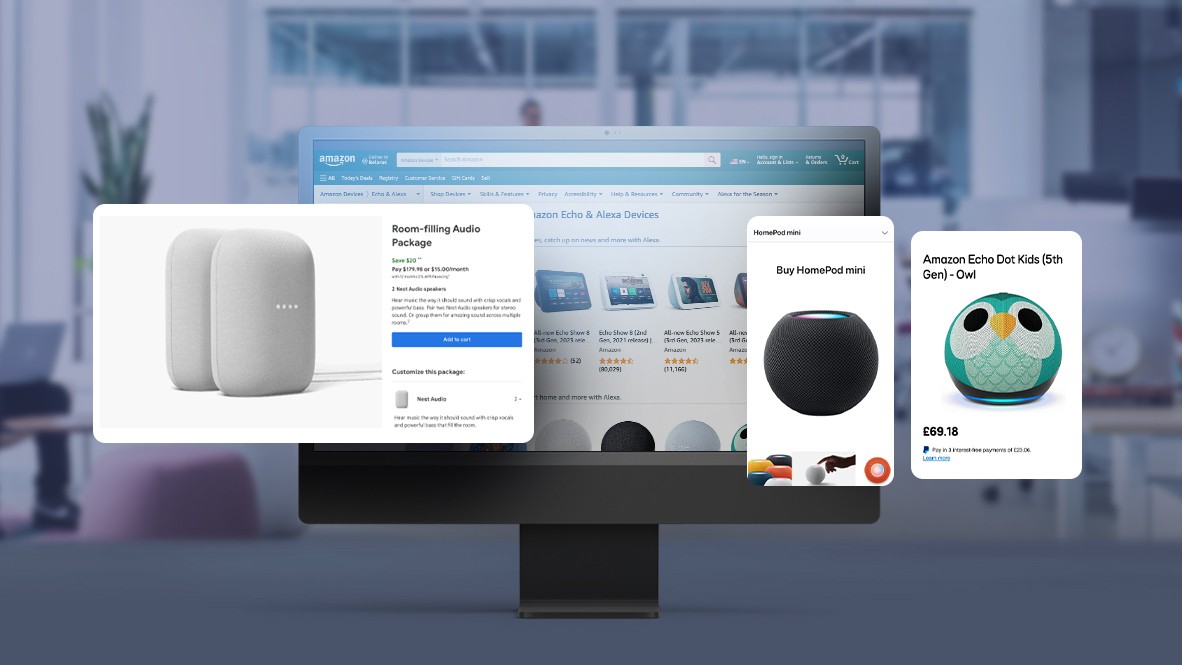
It’s probably needless to explain that when we mention retail media today, we’re generally referring to those familiar banner and display ads you encounter while browsing a retailer’s website or mobile app. But what’s truly worth highlighting in our 2025 AdTech outlook is just how fast this segment is evolving.
Retail media is projected to make up over 25% of total digital media spending by 2027, firmly establishing itself as one of the core pillars of modern advertising strategies. In the US alone, retail media ad spending is expected to more than double — reaching $109.4 billion by 2027, according to eMarketer3. This massive growth is being fueled by retailers’ deep access to first-party data, closed-loop attribution, and the rising demand for privacy-compliant targeting solutions.
What’s the reason behind these impressive numbers appearing now, given that most retail media networks have been operating as closed-loop ecosystems?
Here’s the deal: lately, retail media networks have shifted their strategies and are becoming more open to a programmatic approach. This means that retail media inventory is now connected to off-site properties and third-party media, expanding its reach across various channels in retail campaigns.
The result? A remarkable surge in opportunities. Retail media ad placements, in particular, are becoming a lifeline for newer products and smaller brands. These entities often have no previous traffic, making them less likely to appear organically. Retail media steps in, offering brands a fair chance to ensure their products catch the eyes of shoppers and create an additional revenue stream.
But it’s not just newer players who benefit from this landscape. For all advertisers, leveraging retail media ads means engaging customers right at the point of sale, directly linking ad spending to digital sales. With an abundance of first-party data and in-depth user profiles built around buying preferences, retail media becomes a powerhouse for analytics and attribution.
7. Digital Out of Home remains undiminished
The global Digital Out-of-Home (DOOH) advertising market continues its upward trajectory, with global ad spending forecasted to reach US$19.08 billion in 2025. Looking further ahead, the market is expected to grow at a CAGR of 6.79% between 2025 and 2030, ultimately reaching US$26.49 billion by 20304.
Digital Out-of-Home advertising is hardly a new concept in the marketing world — many advertisers are already familiar with its potential. However, the coming years are expected to bring exciting advancements that will make this channel even more powerful and dynamic.
The growing popularity of programmatic DOOH advertising
A significant portion of the industry’s growth will stem from the rapid expansion of programmatic DOOH, with real-time bidding (RTB) opportunities now accessible through widely used DSPs. Besides, Google has taken a step to make DOOH ads accessible to all users of its advertising platform, Display & Video 360 (DV360), which currently collaborates with various DOOH SSPs and ad exchanges to provide access to the inventory of major out-of-home media owners.
Expanding across multiple advertising channels
The future of DOOH advertising is likely to be all about combining and coordinating it with other advertising methods. This teamwork and blending of strategies will create more unified and consistent messages for consumers across different platforms, making advertising campaigns more powerful and memorable.
For instance, a brand could air a TV commercial, display the same ad on billboards and bus stops, and then retarget that message through digital channels like social media and email, enabling real-time data analysis and improvements, enhancing the targeting and overall effectiveness of advertising efforts.
The bright future of AdTech
AdTech in 2025 is no longer about reacting to trends — it’s about building long-term resilience through strategic, privacy-focused transformation. As the industry moves beyond third-party cookies, companies that actively invest in first-party data infrastructure, AI-powered targeting, and transparent partnerships are finding themselves better equipped to deliver personalized, measurable, and responsible advertising.
This year, we’re seeing significant progress across multiple dimensions: AI is becoming more operational and less experimental; CTV and DOOH are taking their place at the center of omnichannel strategies; and retail media is rapidly evolving from a walled garden to a scalable, programmatic ecosystem. These changes aren’t just technical — they demand new ways of thinking about collaboration, measurement, and consumer trust.
For decision-makers, the question is no longer whether to adapt, but how quickly and intelligently it can be done. The opportunities are clear, and so are the risks of falling behind.
If you’re looking to evaluate where your business stands in this shifting landscape, Oxagile, with deep AdTech expertise, is here to help — not just as a technology partner, but as a guide through the complex, fast-moving world of modern AdTech. Let’s identify the solutions that align with your goals and help you turn change into measurable growth.
Sources:
1. Fortune Business Insights, AdTech Market Report
2. IAB Tech Lab, Trusted Server Press Release
3. eMarketer, Retail Media Ad Spend Forecast
4. Statista, Digital Out-of-Home Advertising Market Outlook



